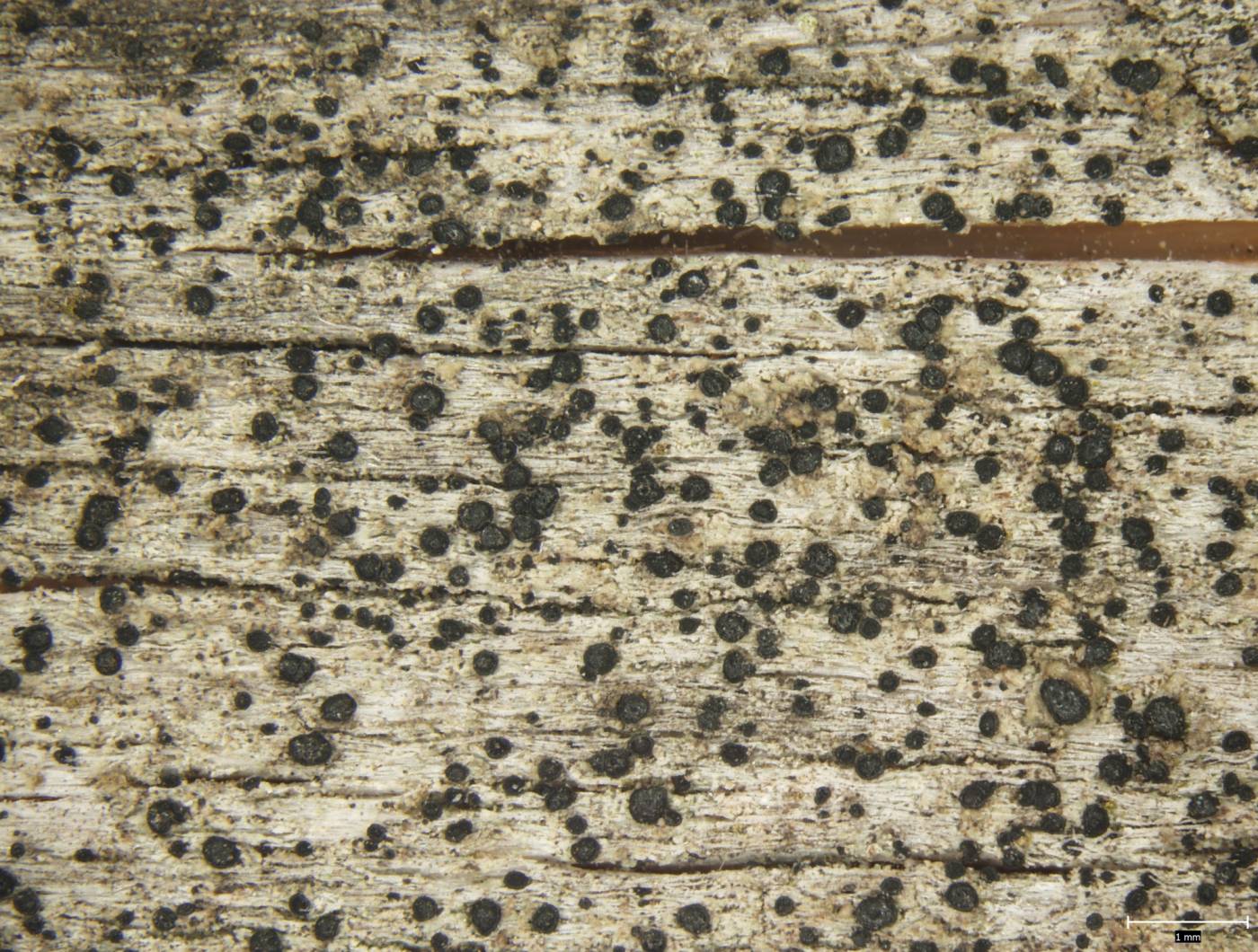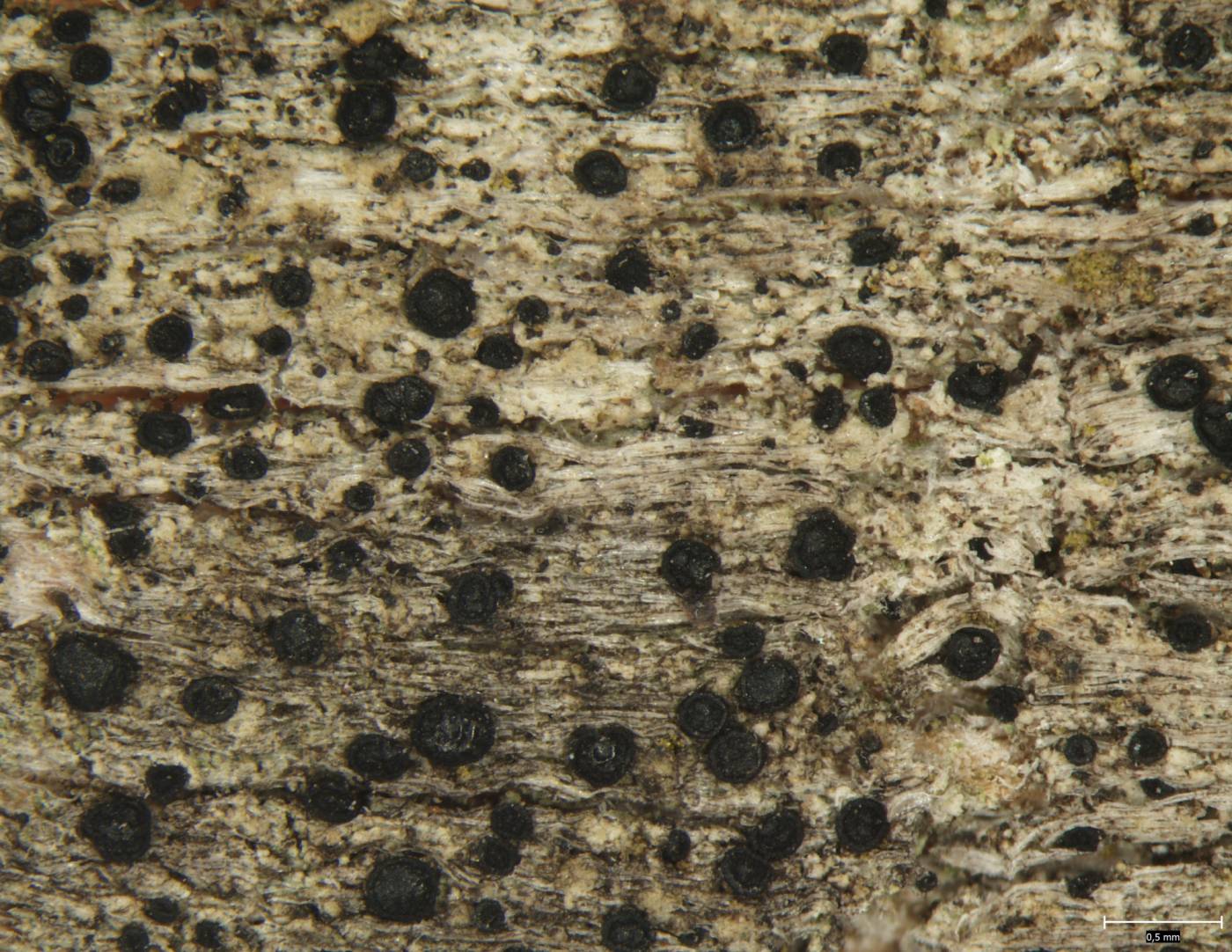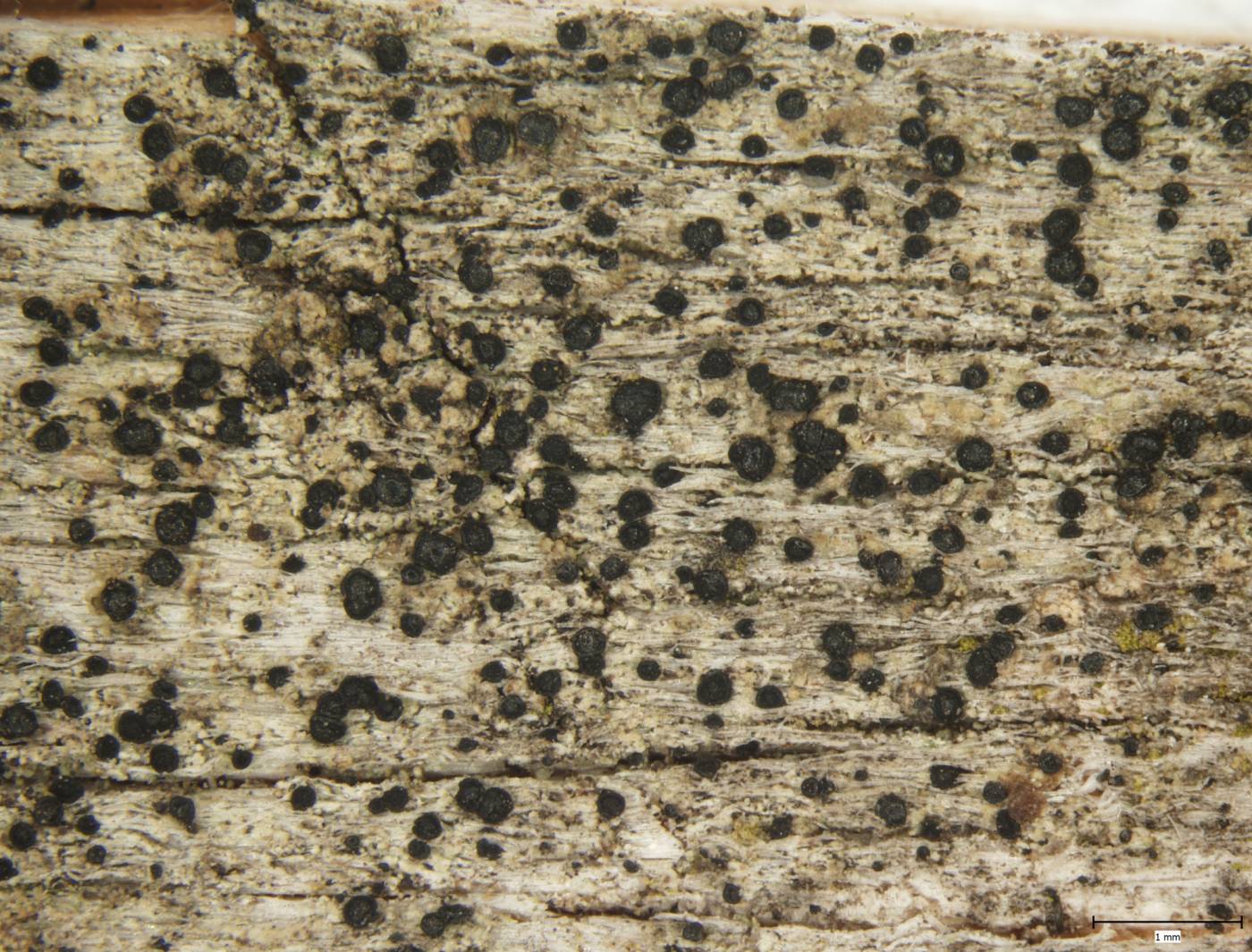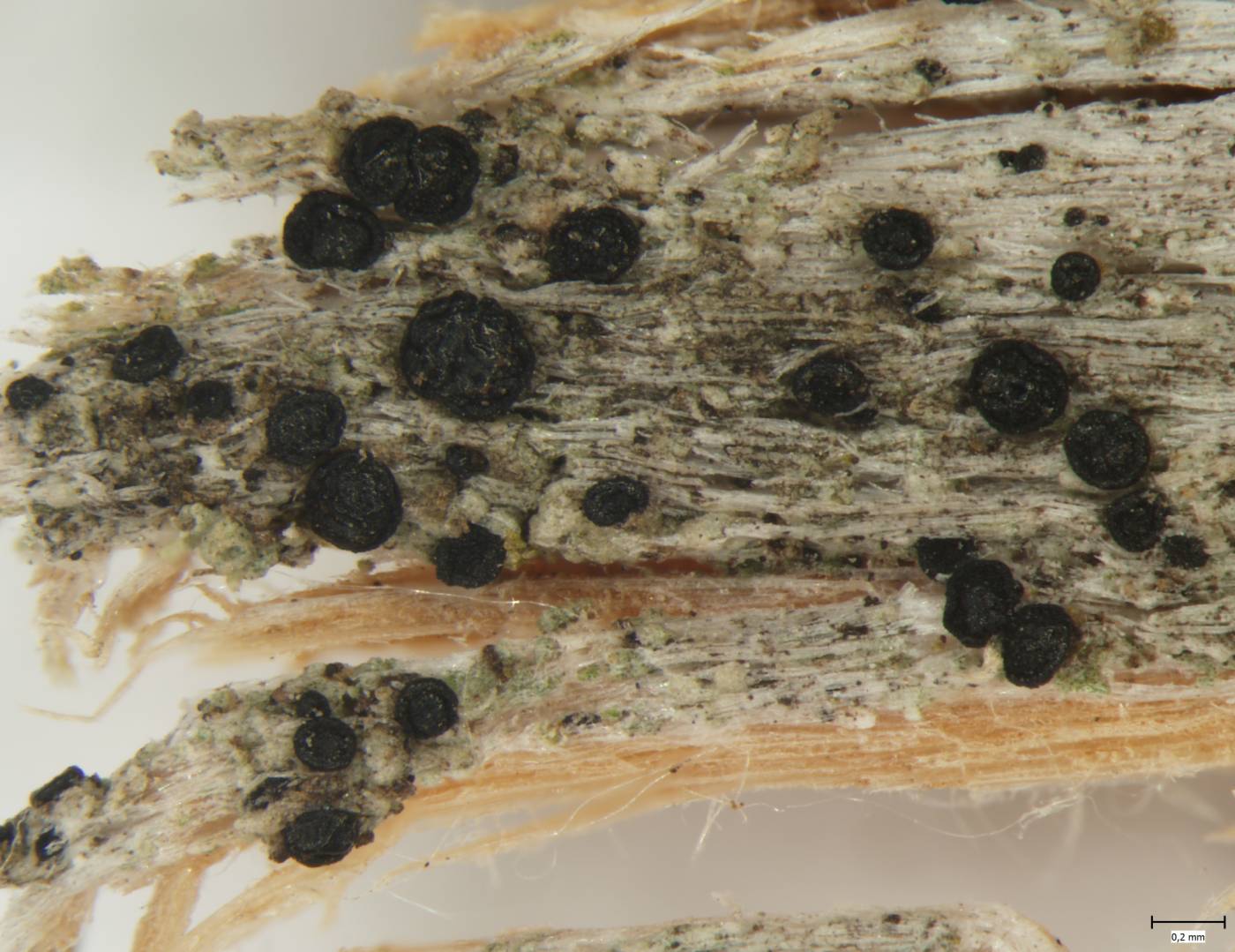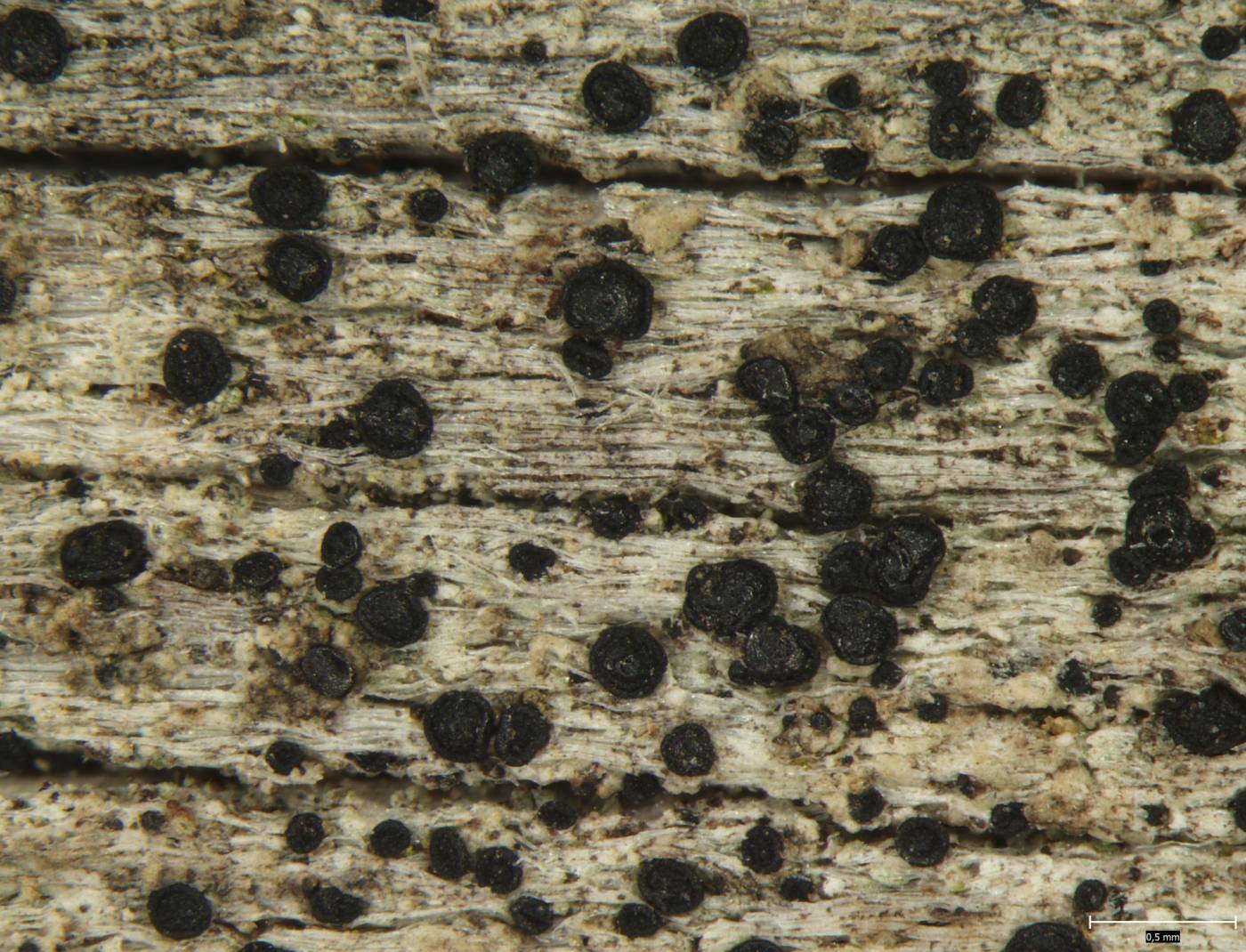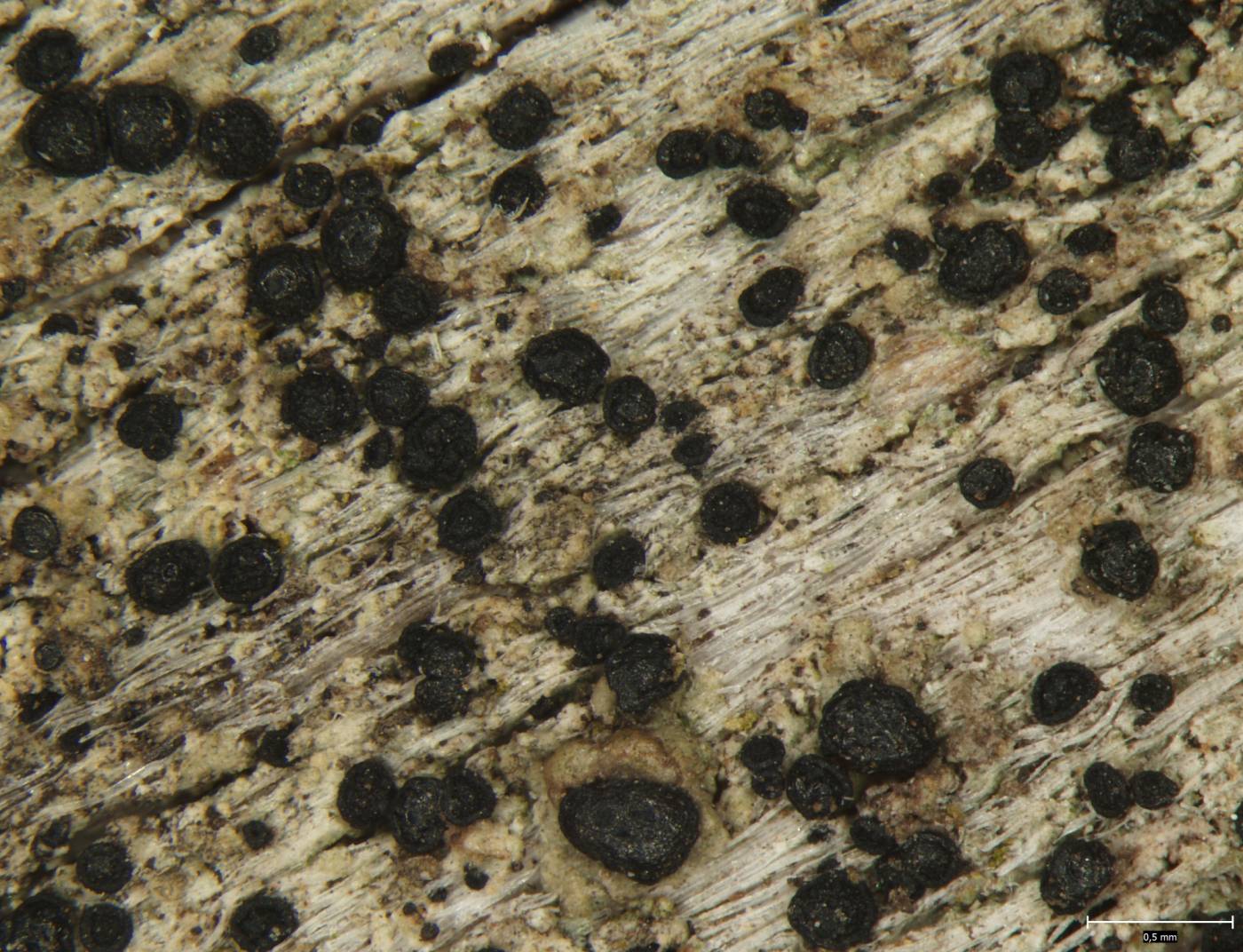A small crustose lichen with an inconspicuous thallus immersed in a substrate and sessile black apothecia. It resembles Amandinea punctata, but differs in tinier fruiting bodies and prominently smaller ascospores.
The lichen grows on acidic bark of conifers (such as fir) and deciduous trees (mainly oaks and sycamores), less often also on wood of snags and stumps. It prefers weathered and porous, rain-protected pieces of dry bark. It is apparently microclimatically sensitive and requires higher humidity. In Europe, Buellia schaereri is widespread, but abundant only locally. In the central part of the continent, it has been reported more frequently only from the Alps. There are just a few recent records from the Czech Republic, that indicate the species is widespread both at low elevations (e.g. NP Podyjí) and in the mountains (Šumava Mts). Large populations have been recorded in the fir forest Čertova stráň in the foothills of Mt Boubín in the Šumava Mts. Historical data are mostly from the early 20th century (see the catalogue by Vězda & Liška 1999).
taxonomic classification:Ascomycota → Lecanoromycetes → Caliciales → Caliciaceae → Buellia
Red List (Liška & Palice 2010):VU – vulnerable
Red List (Malíček 2023):C2 – strongly endangered
Occurrence in the Czech Republic
All records: 13, confirmed 8. One click on a selected square displays particular record(s), including their source(s).
